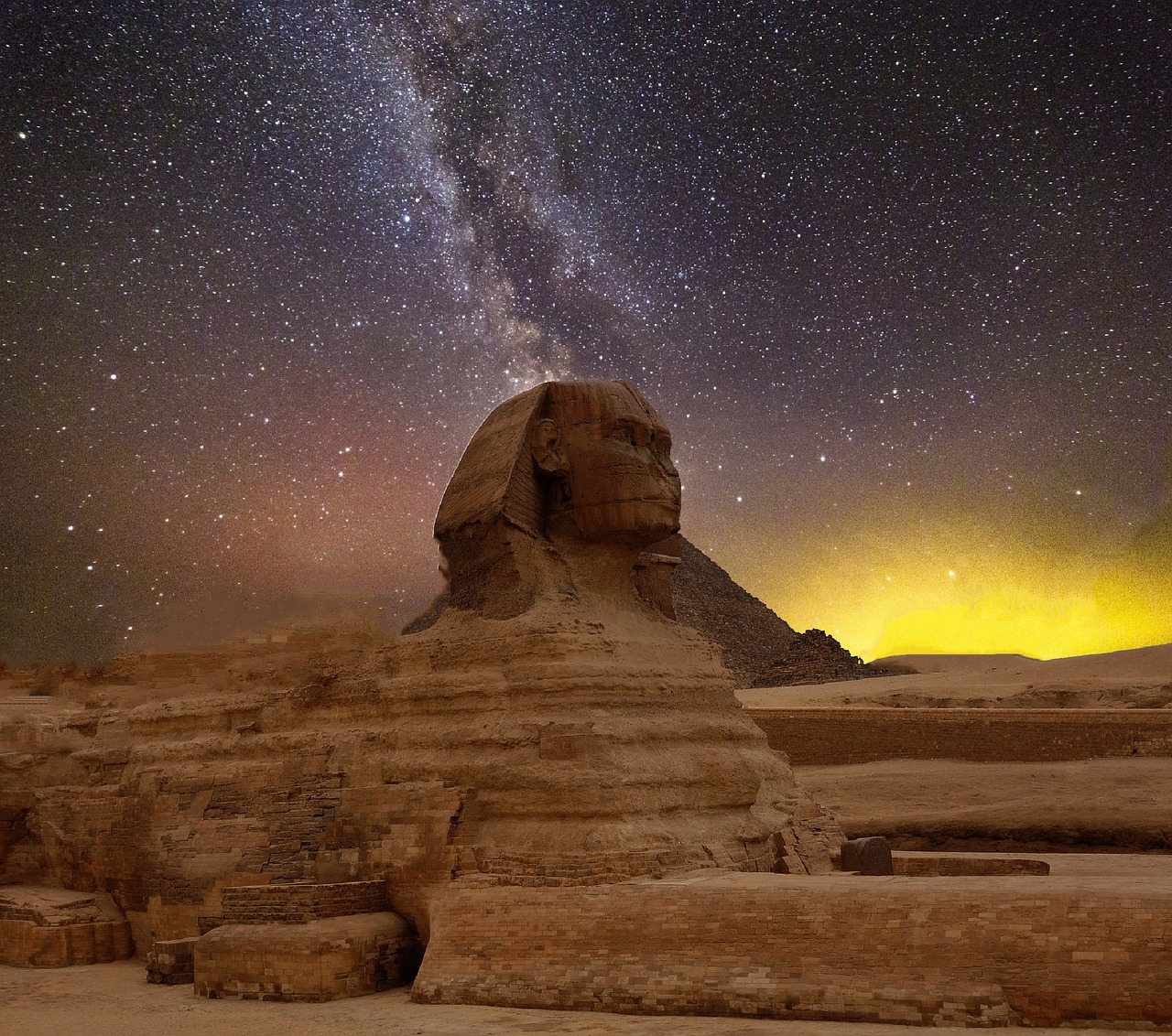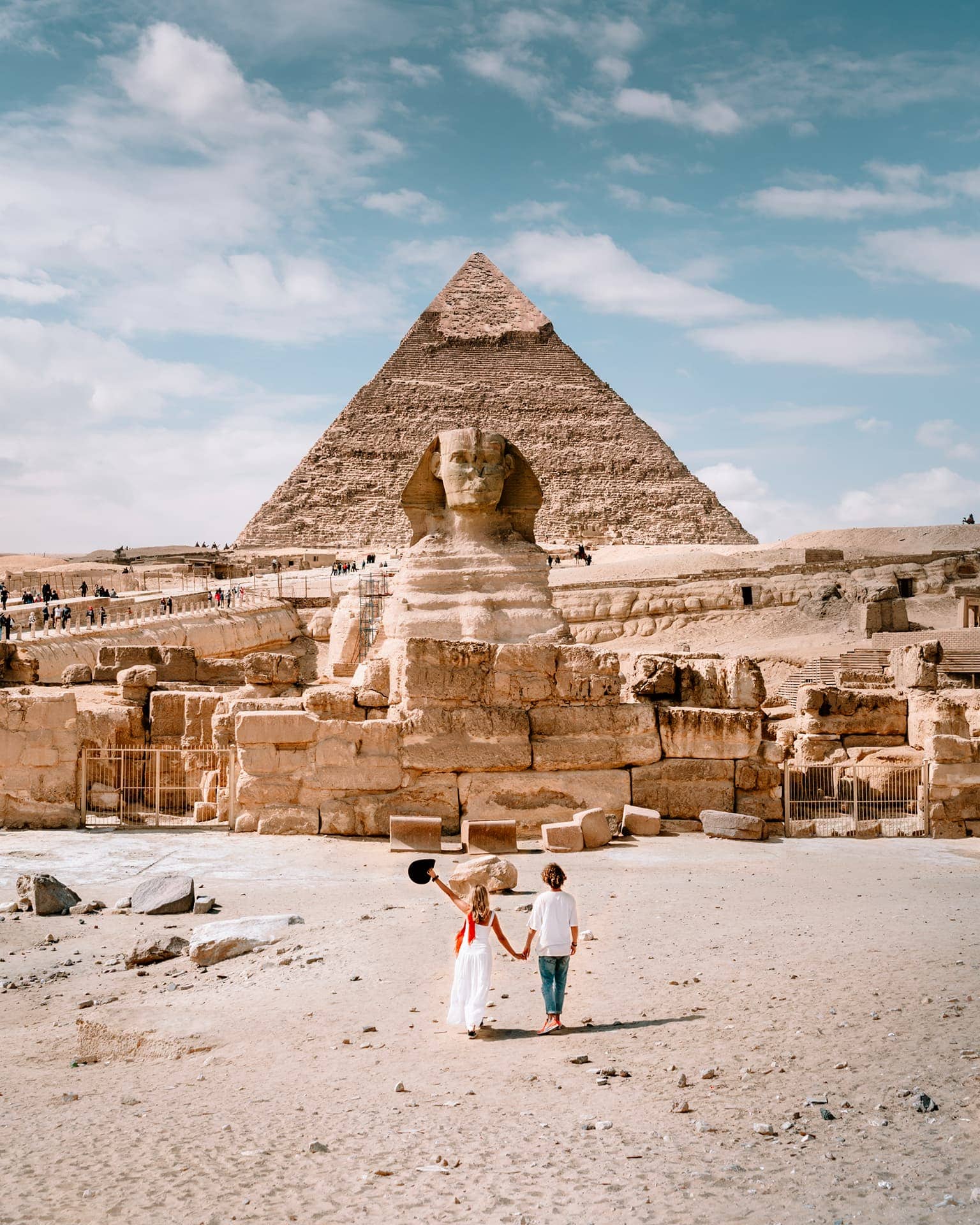

The Great Pyramid of Giza, also known as the Pyramid of Khufu or Cheops Pyramid, stands as an enduring testament to the ingenuity and architectural prowess of ancient Egypt. Built over 4,500 years ago during the reign of Pharaoh Khufu, it remains one of the most iconic and awe-inspiring structure
s in human history. Rising to a height of 481 feet (146 meters), it held the title of the tallest man-made structure for millennia. Constructed from an estimated 2.3 million limestone blocks, each weighing several tons, the pyramid's precision engineering and meticulous craftsmanship continue to baffle modern observers. Its four sides align almost perfectly with the cardinal points of the compass, a feat achieved with remarkable accuracy given the tools available at the time. Serving as the final resting place for Pharaoh Khufu, the pyramid was designed to safeguard his body and possessions for eternity. Despite centuries of plundering and natural decay, the Great Pyramid of Giza endures as a symbol of Egypt's ancient civilization and remains an object of wonder and fasciation for people around the world.
But when I'm saying pyramids there's a lot of questions come up on your mind like
1. **How were the pyramids built?**
- Pyramids were built using a combination of skilled labor, advanced engineering techniques, and organized manpower. The precise methods are still debated, but it's believed that ramps, levers, and possibly a system of counterweights were used to move and position the massive stone blocks.
2. **Were they slaves or freemen who built the pyramid?**
- While there is evidence that both skilled craftsmen and laborers were involved in pyramid construction, it's unlikely that the builders were slaves in the traditional sense. Many scholars believe that the workers were likely skilled laborers who were either paid for their work or conscripted for labor during periods of the year when farming was impossible.
3. **Why did they insist on the pyramid shape?**
- The pyramid shape was significant in ancient Egyptian culture as it symbolized the rays of the sun. Additionally, it was believed to facilitate the pharaoh's ascent to the afterlife. The shape also provided stability and durability to the structure, making it suitable for housing the pharaoh's tomb.
4. **What's the most impressive thing about the pyramid that makes it famous?**
- The sheer size and precision of the Great Pyramid of Giza are what make it famous worldwide. It was the tallest man-made structure for over 3,800 years and remains one of the most accurately aligned buildings in existence. The precision with which the stones were cut and placed, along with the mysteries surrounding its construction, continue to captivate people's imaginations.
5. **Why is this pyramid still intact?**
- The Great Pyramid of Giza has endured largely due to its robust construction techniques and the quality of the materials used. The stones were carefully cut and fitted together without mortar, creating a sturdy structure. Additionally, the pyramid's location and the dry climate of Egypt have helped preserve it over thousands of years.
 English
English











